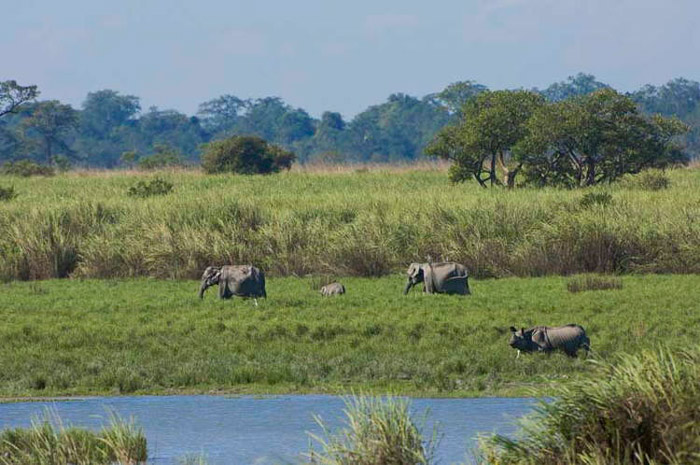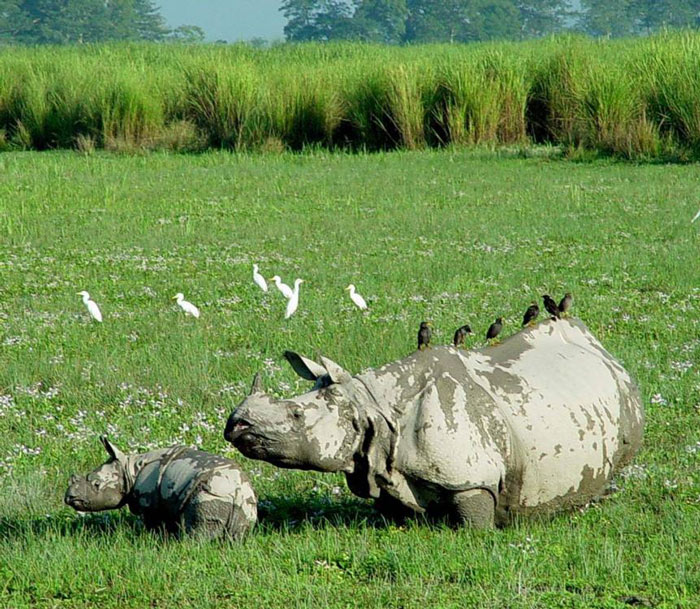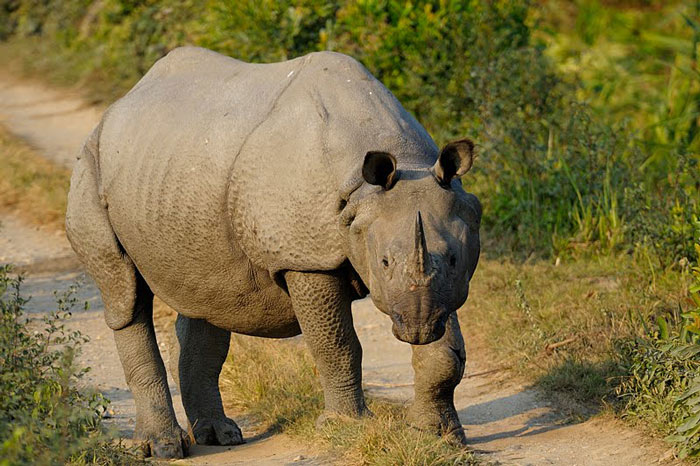Kaziranga National Park
Unesco's Scientific, Educational and Cultural Organization has recognized the Kaziranga National Park of India as a World Natural Heritage in 1985.

Kaziranga National Park is located in the eastern part of India, the area of the entire national park is about 430 km2. The park is one of the last areas in eastern India not affected by human presence. Kaziranga Garden is home to about 7,500 elephants, accounting for 50% of the Indian elephant population. This is also the place with the largest number of rhino horns in the world, besides, there are many other rare animals living here such as tigers, elephants, leopards, bears and thousands of birds.

Kaziranga National Park has a resident elephant population of up to 50% of all elephants in India because the garden has a long-term sweet grass, which is the elephant's favorite food. The national park has a total of 15 rare and precious animal species that are at high risk of residence. In addition to the animals that live in the forest, there are also reptiles like crocodiles, even here the appearance of the Ganges dolphins and otters is found. Kaziranga National Park also has a number of viable species, but the number is not much. Among the thousands of birds there are about 100 species from Siberia, some precious species like gray pelican, falcon, eagle .

In the fall, Kaziranga National Park is the destination of thousands of animals from the Tibetan and Siberian plateaus. These animals come here to avoid the winter chill in their homeland. Recognized by Unesco in 1985, Kaziranga garden is famous for its natural landscape as well as the existence of many rare species here. As before, the garden is the only place that has no human influence and is a protected area, an ideal place for many animals to live in, in recent years this has changed. More and more rare and precious animals here die, the number is so high that the international community must speak out and take protective measures. The reason for this phenomenon is because Highway 37 connecting from Assam to India's northern provinces runs through the national park causing serious impacts on the overall ecosystem of the entire region. This highway was completed and put into use in 2008, since then, the number of dead animals has increased year by year.



Some animal species are injured by fights and fights when listening to cars and horns often by vehicles on the road. Because this is the main route connecting many states, the number of vehicles traveling is relatively large. It is estimated that on average, there are more than 1000 types of vehicles passing through highway 37 per day. Not only noise and smoke, gasoline from waste cars has a great influence on the natural habitat of animals. and the birds here. Besides, there are some animals that go through the highway and are stabbed to death.

Tourism development and poaching are also major causes of natural impacts on the natural life of animals and flora in Kaziranga National Park in India.
The speed of urbanization in Kaziranga since the highway 37 has also grown at a rapid rate. Previously this was a desolate area, now this has become a place for the business of trading, business investment, tourism investors also poured here to invest in hotels and restaurants to develop. travel. This led to a narrow area of gardens to reserve land for real estate business, and as a result, during the flood season, many mammals had no place to live. In the past few years, Kaziranga National Park has another danger that is always close to it: poaching rhino horn and ivory . Because the garden has the number of elephants equal to one-fourth of India's and is home to the world's largest number of 1 horn rhinos, it has always been stolen and stalked. There are dozens of elephants every year and so are the number of rhinos killed for horns and tusks, which make these rare and precious animals decline in quantity. To ensure the safety of the animals here, the government in India also has many remedies but not effective. WWF has launched campaigns to call the government of Assam province to apply stronger measures to confront the challenges of criminal gangs, to strengthen security forces to protect them. animal protection. Besides, the Indian government is also planning to build specific plans to avoid massive construction that affects the environment of the national park.
- Kingdom of elephants and tigers
- Heaven of tigers
- Yor-Don National Park calls for help
- Te Wahipounamu, southwestern New Zealand national parks
- Þingvellir National Park (Thingvellir)
- Rhino in Cat Tien National Park is under threat
- Detecting toad, mint banana in Xuan Son National Park
- Discover new lizards in Peru National Park
- Managing and protecting Bai Tu Long National Park
- Discover the village over 1000 years old in the US national park
- The stunning scenery of Plitvice National Park, Croatia
- The government allowed the expansion of Bach Ma National Park
 Suzhou classic bonsai garden - China
Suzhou classic bonsai garden - China Chau Nguyen Dynasty
Chau Nguyen Dynasty Thai Son Mountain - World Wonder
Thai Son Mountain - World Wonder Ancient villages of Shirakawa-go and Gokayama
Ancient villages of Shirakawa-go and Gokayama